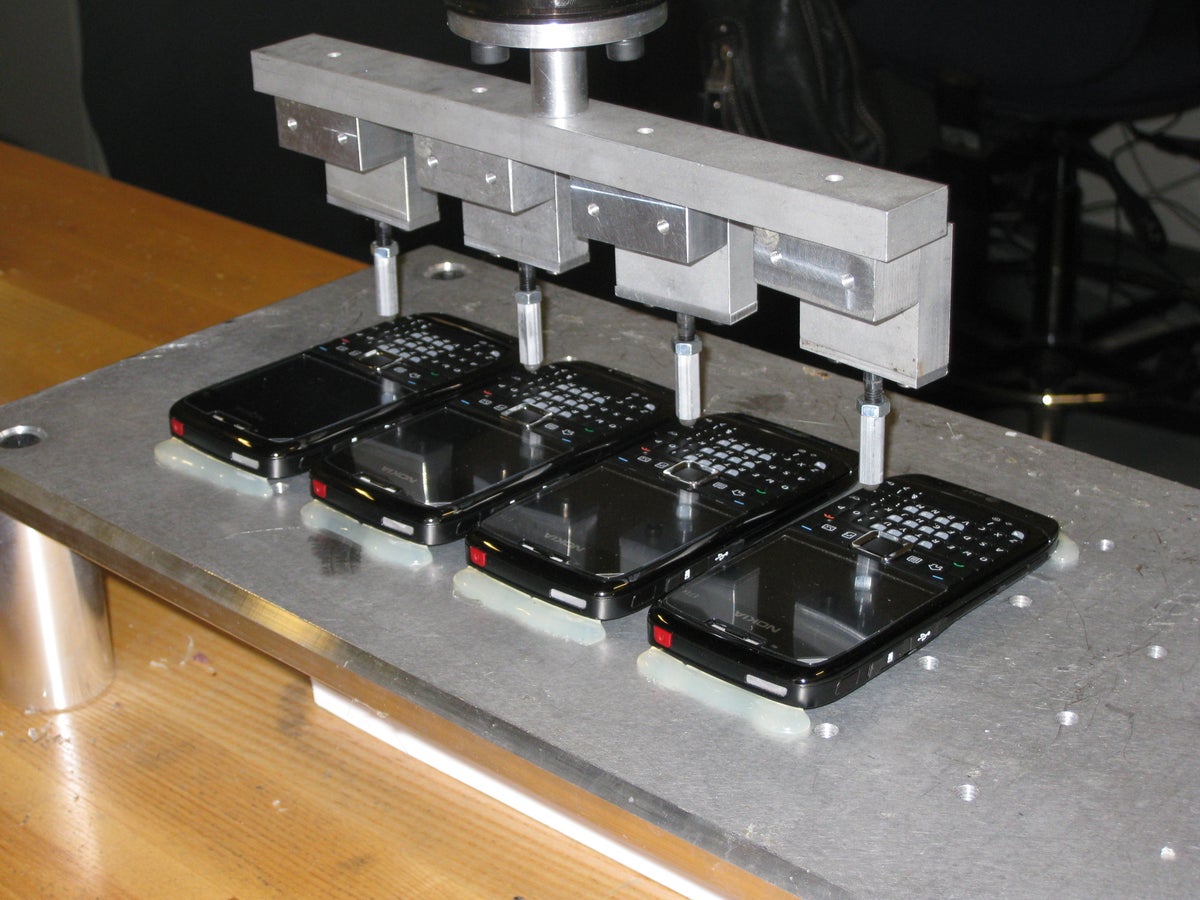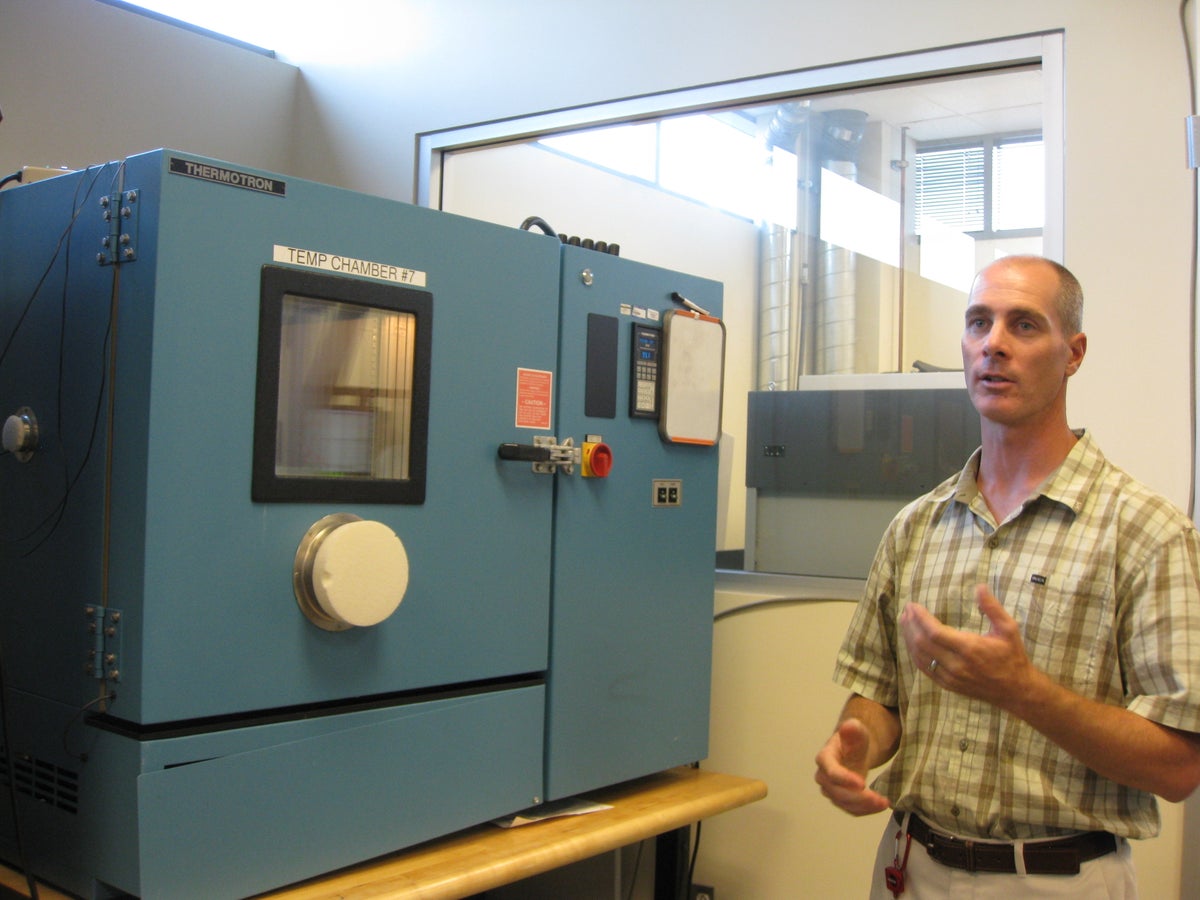
The button test

The climate test
The rain test
Your Nokia phone isn't built to withstand an accidental plunge in the toilet, but a little rain every now and again shouldn't fry it.
"You should be able to go from the car to the house in the rain and your phone should still work," Rubie said.
The bending test
Have you ever sat on your phone? Well, you aren't the only one. In this test, Nokia sees how far a phone can be bent before it cracks.
"We try to push the phone to the limits in the lab, so that they don't break when they're in the field," Rubie said.
The dust and particle test
The tumbler
The jeans test
Flip phone stress test
The slide test
The household chemical test
Taking a closer look
When one of the stress tests results in a failure, the analysis lab takes a closer look at the device.
Here is a picture of a cell phone that has been sliced down the middle to get a closer look. The damaged area is isolated and examined under a microscope. Sometimes an electron microscope is used to see very tiny parts of the device. And 3D scans can also be used to isolate problems.

